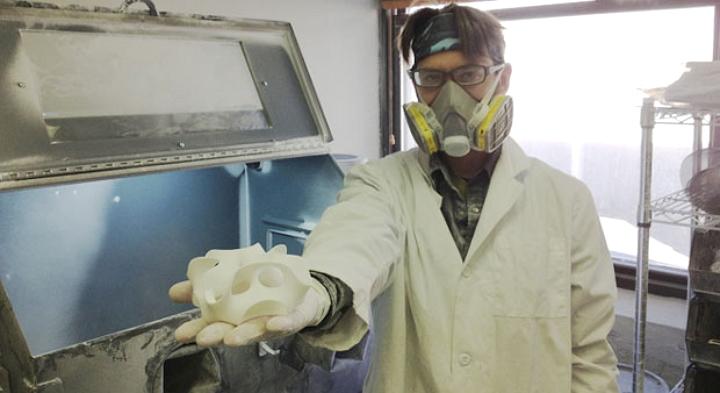
Spieczny says that, while she’s a 3D printing booster of long standing, one element of the technology has gone begging when it comes to study and investigation – the safety of the process to users.
“We need to be asking the tough questions, and doing everything we can to ensure 3D printing is safe for everyone,” Spieczny says. “My hope is that this project will raise awareness, encourage further research, and promote dialogue about 3D printing and consumer safety.”
That’s why she’s using Kickstarter to fund the Clean Strands initiative.
The idea is a bit tougher than it might sound, as filament manufacturers use proprietary formulations, and since PLA and ABS are heated up to 428°F – or 220°C – in many cases they emit fumes which may or may not contain harmful elements.
Spieczny says the Clean Strands initiative would work to discover which chemicals are being emitted into the environment when PLA and ABS are heated, and in what concentrations.
She says Clean Strands will work to test the emissions of those 3D printing filaments with the Built Environment Research Group (BERG) at the Illinois Institute of Technology. According to Spieczny, BERG remains the only research lab to publish an extensive study on indoor air quality and 3D printing.
If the initiative is funded, Clean Strands will have BERG’s founder, Dr. Brent Stephens, test for the presence of UFPs (ultra-fine particles) and TVOCs (total volatile organic compounds) emitted for some 10-20 PLA and ABS filaments under varying printing conditions.
Backers, as well as filament manufacturers, members of the 3D printing industry and the general public will then have access to the final report upon publication. Spieczny says that once the findings have been made public, Clean Strands will then seek out filament manufacturers to encourage them to display a Clean Strands Seal of Approval on their materials which qualify.
“The availability of affordable and child friendly 3D printers has opened up a whole new world of innovative design and creative expression that links the digital and physical worlds,” Spieczny says. “This is a powerful educational tool for educators, as well as a way for students to engage in authentic solutions to real world issues and applications. The availability of a filament that is free of toxic fumes makes administrators, like myself, literally breathe easier in making 3-D printers readily available to our students.”
You can check out the various levels of backing commitment for the Clean Strands Kickstarter campaign here…
Do you think the 3D printing community needs an initiative like Clean Strands? Let us know in the Clean Strands forum thread on 3DPB.com.